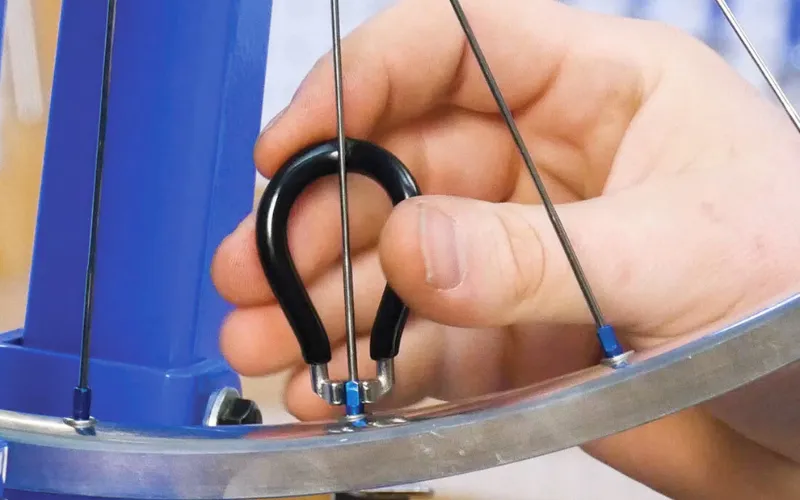Electric bikes, or e-bikes as commonly known, are quickly becoming one of the most popular forms of transportation. They offer a great way to get around town, reduce your carbon footprint, and save money on fuel. But with any electric vehicle, one important factor must be considered: e bike battery lifespan.
It is essential to understand the battery’s size, charging tips, potential problems, and replacement options to maximize the life of your e-bike battery. In this article, I will discuss e-bike battery lifespan problems, charging tips, size, and replacements to
How Long Does an E Bike Battery Last?
The lifespan of an e bike battery is determined by several factors, such as the type of battery, the charging habits, and the amount of use it gets. Most e bike batteries can last anywhere from 2 to 5 years, depending on how well you take care of them.
Lithium-ion batteries, the most common for e bikes, are typically rated for between 500 and 1000 charge cycles. This means that if you charge and discharge the battery 500 to 1000 times, it will begin to lose its capacity to hold a charge. Therefore, taking care of your battery and charging it regularly is essential.

In addition to the type of battery, the amount of use it gets can also affect its lifespan. If you’re an avid e-bike rider who uses your bike often, the battery will likely need to be replaced more frequently than if you only ride it occasionally.
Finally, how you charge your battery can also impact its lifespan. So, it’s vital to ensure you follow the manufacturer’s instructions when charging your e bike.
Common E Bike Battery Problems to Avoid
The most common e-bike battery lifespan problems are improper charging, overcharging, and discharging.

Improper Charging
Improper charging is one of the most common e-bike battery lifespan problems. This can occur if the battery is not charged using the correct charger or if the charging process is interrupted due to an unforeseen power outage.
It can also happen if the battery is left to charge for too long. To avoid this problem, use the correct charger and the “trickle charge” setting to ensure the battery is not overcharged.
Overcharging
Overcharging is another common E bike battery problem. This occurs when the battery is left to charge for too long, causing it to overheat and become damaged. To prevent this, always follow the manufacturer’s instructions regarding charging times.
Discharging
It is another e bike battery lifespan problem. This can occur when the battery is left unused for extended periods or when the battery is used in extreme temperatures. To avoid this problem, check the battery level regularly and take the battery out of the bike when not in use.
Overuse
This occurs when the battery is used in excess, causing it to become damaged or worn out. To prevent this, follow the manufacturer’s instructions regarding how long the battery should be used for each ride.
Poor Maintenance
Poor maintenance is another e bike battery lifespan problem. This occurs when the battery is not adequately cared for, leading to premature wear and tear. Always follow the manufacturer’s instructions for battery maintenance, such as cleaning and replacing the battery on time.

Temperature
Temperature is another e-bike battery lifespan problem. It can occur when the battery is used in extreme temperatures, leading to damage and reduced life expectancy. To prevent this, always follow the manufacturer’s instructions regarding ideal temperature ranges for the battery.

Charging Tips for Better E Bike Battery Lifespan
There are a few e-bike battery charging tips for better battery lifespan. With the proper charging and maintenance, your e-bike will provide you with years of reliable service.

- Always unplug your charger from your e-bike before moving your e-bike. It will help to prevent any unexpected power surges or shocks from occurring.
- Make sure your charger is plugged into a power outlet rated for your charger’s amperage. Overloading a power outlet can lead to a short circuit and damage your e-bike or charger.
- Wait to leave your charger plugged in overnight. Doing so can overcharge your battery, leading to decreased battery lifespan.
- When it comes time to charge your e-bike, ensure the battery is completely drained before plugging in the charger.
- Only use external chargers that are specifically designed for your e-bike. Using the wrong charger can damage your battery and cause a fire.
- Always inspect your battery and charger for any signs of wear and tear before charging your e-bike. If you notice any damage, replace the battery or charger immediately.
- Check the temperature of your battery before, during, and after charging. If the temperature of your battery is too high or too low, it could be a sign that something is wrong.
- Make sure that the contacts on your charger and battery are clean and free of dirt and debris. Dirty contacts can lead to poor charging and can even cause a fire.
- Only use the charger that came with your e-bike. Improperly charging your battery can lead to decreased battery life.
- Store your charger in a cool, dry place when not in use.
Types & Sizes of the E Bike Battery
Batteries are a vital component of any electric bike. They provide the power and range needed from point A to point B. The size and type of battery you choose for your electric bike will depend on various factors, including the type of bike, the terrain you’ll be riding on, and your budget.
When it comes to electric bike batteries, there are several different sizes and types available. The most common types are lead-acid batteries, lithium-ion batteries, and nickel-metal hydride batteries. Each has advantages and disadvantages, so it’s important to consider all the factors before deciding.

Lead-acid batteries are the oldest and most common battery used in electric bikes.
They are inexpensive and have a long life, but they are also heavy and difficult to recharge. These batteries are best suited for short-distance commuters or casual riders.
Lithium-ion batteries, on the other hand, are much lighter and more efficient. They are also much more expensive but last longer and can be recharged more quickly. It is best for long-distance commuters or serious riders who need more power and range.
Nickel-metal hydride batteries are the newest battery available for electric bikes. They are lighter than lead-acid batteries and more efficient than lithium-ion batteries. It is relatively affordable, making it an excellent choice for budget-conscious riders.
What is the Replacement Cost of An E Bike Battery?
When it comes to the electric bike battery replacement cost, it depends on the type of battery and the brand of the bike. E-bike batteries range in cost from $150 to $700.
The most crucial factor to consider when purchasing a battery is the capacity or watt-hours of the battery. The higher the watt-hours, the higher the capacity and the longer the battery will last.
If you are looking for a replacement battery, you must check the type and size of the battery you need. The two most common types of e-bike batteries are lead-acid and lithium-ion.

Lead-acid batteries are the most affordable, but their capacity tends to be limited. Lithium-ion batteries, on the other hand, are more expensive but offer higher capacity and a longer lifespan.
The next factor to consider is the brand of the e-bike. Some brands are known for their high-end lithium-ion batteries. These batteries typically have a higher capacity and longer lifespan than other brands.
However, they also tend to be more expensive. Alternatively, some brands offer lead-acid batteries, which are less expensive but may only last for a while. So, how much does an ebike battery cost? Regarding the cost of an e-bike battery, it is hard to give a single number as the price will vary depending on the battery’s type, size, and brand.
As an expert in the field, I recommend researching different brands and types of batteries before purchasing them to get the best value for your money.
How to Properly Store Your E Bike Battery?
Store your e-bike battery in a cool, dry place. Avoid extreme temperatures and direct sunlight. Ensure the battery is charged to 40-60% before storing it. Disconnect the battery and store it in a protective case. Avoid storing the battery near metal objects and magnetic fields.
How long do e-bike batteries last on one charge?
Generally, a battery can last between 20 to 40 miles on a single charge, but this can vary significantly depending on the terrain type, how much the motor is used, and how much the rider weighs.
How long does an e-bike battery usually last?
The average lifespan of an e-bike battery is between 500-1000 charge cycles, equating to 1-2 years of use. However, this can vary greatly depending on the quality of the battery, how it is used and stored, and other factors.
How to Troubleshoot E Bike Battery Issues?
Check the battery charge level and charging connections. Ensure the battery is properly seated in the mount and the power switch is on. Then, check the battery voltage with a multimeter and replace it if it is below the manufacturer’s minimum voltage. Ensure the motor controller is set up correctly and test the motor.
What Size Battery is Best for Electric Bike?
A battery with a capacity of 500-1000 watt-hours (Wh) will power an electric bike for 25-60 miles. Higher capacity batteries may be needed to cover longer distances or for more hilly terrain. When choosing the correct battery for your electric bike, it’s essential to consider the size and type of bike, the terrain you’ll be riding on, and your budget.




